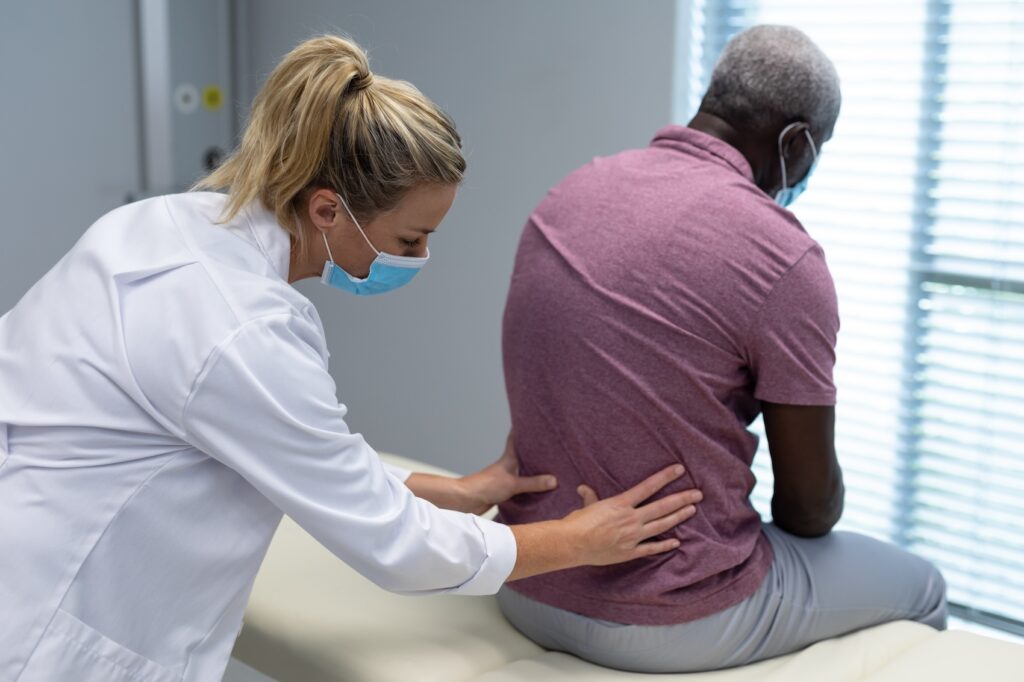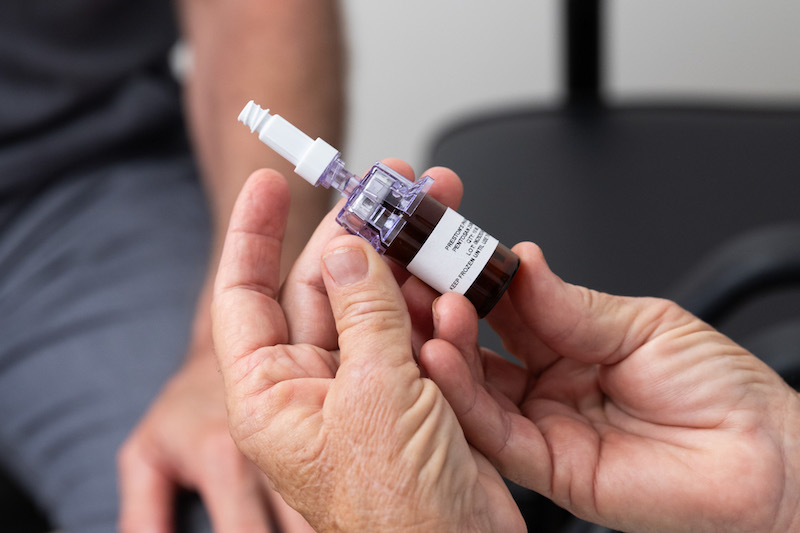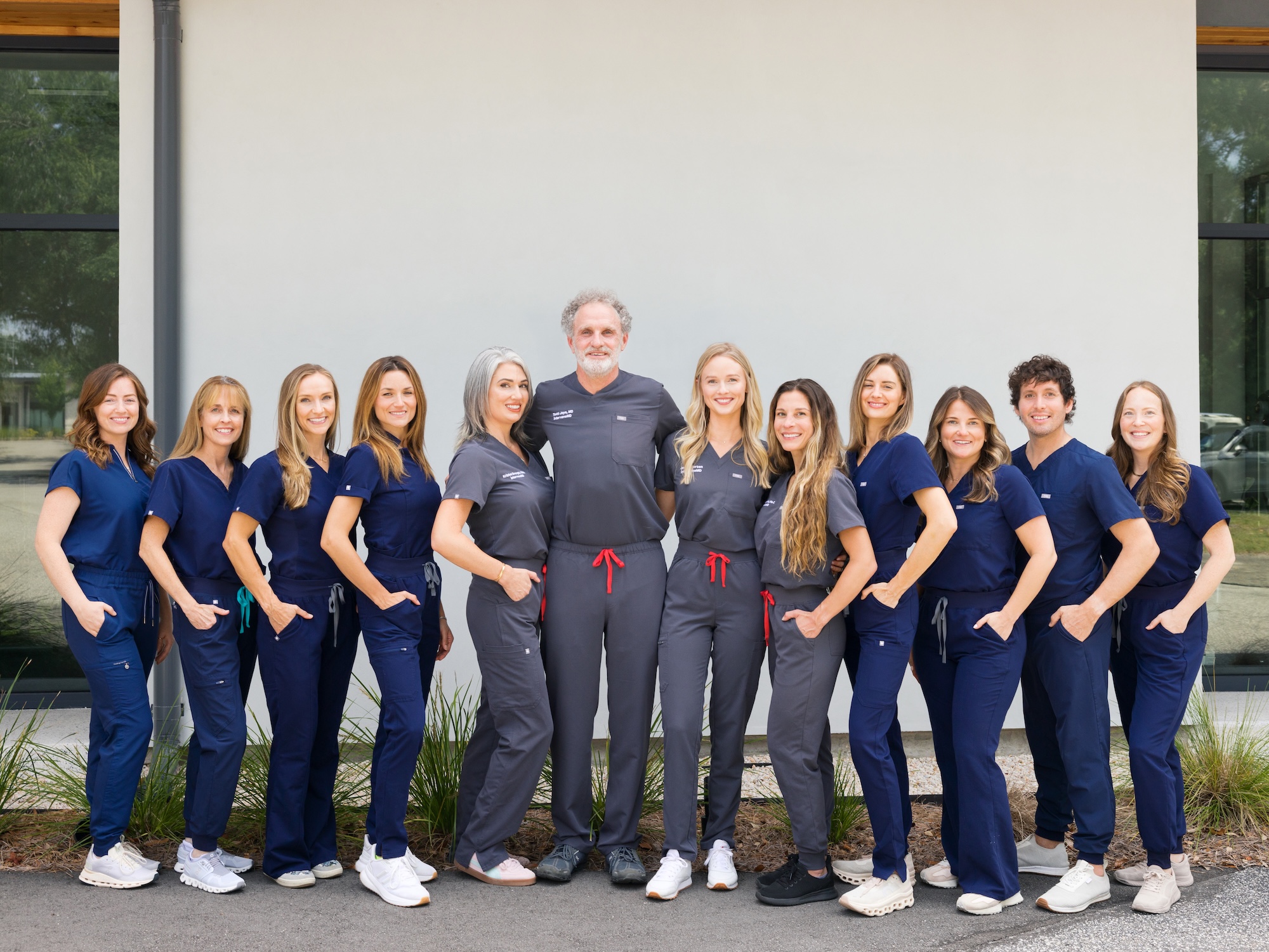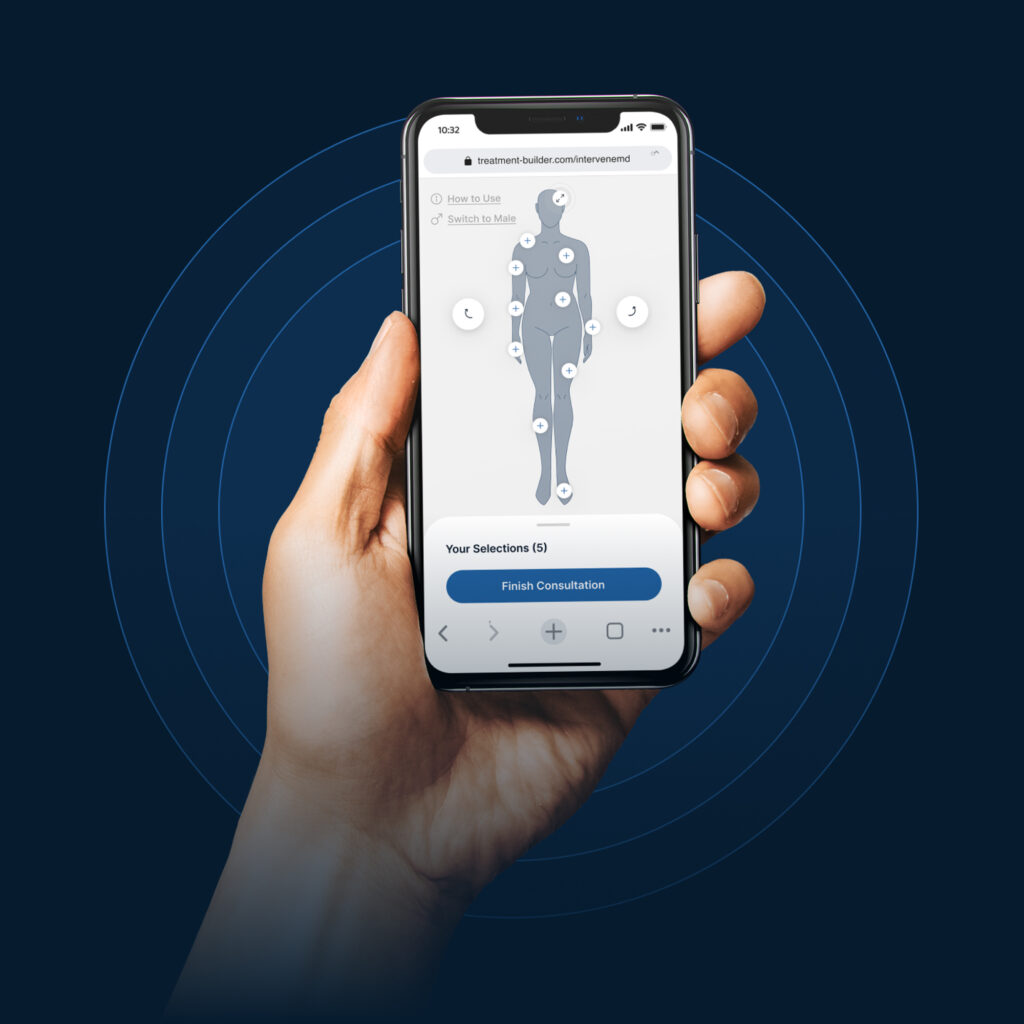
By: Dr. Todd Joye, MD
In my 25 years of medical practice as an orthopedic doctor, I’ve helped thousands of patients struggling with finding a treatment for back pain in Charleston—the most common complaint I encounter.
I’ve seen a retired man, once passionate about his Saturday morning golf games. The fresh air, friendly competition, and camaraderie were highlights of his week. But as back pain crept into every swing, the joy of the game turned into a painful struggle, making even bending to pick up his ball an ordeal.
I’ve worked with a grandmother who cherished gardening and spending time with her grandchildren. Back pain became a constant burden, robbing her of moments she loved—making her hesitate to lift a watering can, plant her favorite bulbs, or travel to visit her family.
I’ve treated young adults who prided themselves on their fitness—playing tennis, attending yoga classes, jogging, hiking, or skiing. A nagging lower back pain disrupted their active lifestyles, turning simple tasks like getting in and out of a car into a frustrating challenge. The gym, once a place of empowerment, became a reminder of what they could no longer do.
These stories, and many more, reflect how widespread back pain is, affecting roughly 20% of the global population. It often lingers, with pain that flares up just when you think recovery is near. Initially, muscles try to protect the area by tightening, limiting movement to allow healing. However, this compression restricts blood flow, reducing oxygen, platelets, and stem cells essential for repair.
The Impact of Back Pain
Over time, prolonged tightness can lead to muscle spasms, weakness, poor posture, and fatigue. This creates a cascade of inflammatory chemicals—a “toxic soup” that accelerates arthritis, disc degeneration, and spinal instability.
The impact of chronic inflammation doesn’t stop at the spine. These same inflammatory processes are linked to systemic diseases, including heart disease, cancer, and neurodegenerative conditions like Alzheimer’s and Parkinson’s.
Beyond physical limitations, back pain often triggers emotional and psychological challenges, such as depression, anxiety, and social isolation.
When discussing the proper treatment for back pain in Charleston at InterveneMD, I often reflect on the “Skeleton Song”—the hip bone is connected to the backbone.
Our bodies age as a whole, not in isolated parts, and back pain usually has multiple contributing factors. It is unlikely that just one muscle, disc, joint or ligament causes it. Therefore, addressing the entire functional unit of the back is essential.
While back pain can be debilitating, it’s important to remember that we have more tools than ever to improve pain and restore function. The following list of treatments is comprehensive but not exhaustive. By understanding the structures of the back and how they interact, along with exploring modern therapies, you’ll be better equipped to find the right solution for your situation.
Remember, any one of these options could be the key to your recovery.
Physical Therapy and Chiropractic
Often, physical therapy and chiropractic are what we first recommend as a treatment for back pain in Charleston. PT & Chiropractic care can both be helpful in restoring the muscle function that is lost due to these protective mechanisms.
While similar in several ways, they do have unique features.
Physical therapy typically involves restoring mobility and flexibility, strengthening core muscles, and improving posture and body mechanics.
Chiropractic aims to improve spinal motion and alignment through spinal manipulation. It can relieve pain, relax muscles, improve movement and reduce pressure on nerves. In addition to helping the body recover from a painful episode, physical therapy and chiropractic can both help prevent further decline in function.
Both modalities have limitations in the setting of disc degeneration and loose ligaments that are commonly associated with back and joint pain.
Therapists often employ dry needling to loosen muscle tension and improve blood supply. However, in cases of spinal instability due to degeneration or ligament looseness, muscles often rebound within a few hours because the root problem remains unaddressed.
Chiropractic can do a great job of lining your bones up. But if the ligaments running up and down the spine are weak, you will not hold your adjustment for very long.
Medications
Medications for back pain have traditionally included non-steroid anti-inflammatories, muscle relaxants and opioids. The non-steroid medications tend to be the most common but carry risks of stomach irritation and bleeding.
Tylenol is a good pain reliever but can damage the liver with prolonged use.
Muscle relaxants and opioids can also help, but both carry increased risks of sedation, which is of particular concern in older patients who are prone to falling.
Steroid Shots
I have used steroid injections for 25 years to reduce inflammation caused by pinched nerves or arthritis in the facet and sacroiliac joints of the spine. They can be highly effective as a treatment for back pain in Charleston, specifically for relieving acute episodes. However, their effectiveness diminishes in cases of chronic back pain.
As the pain persists, the body compensates by relying on nearby structures—such as ligaments, muscles, and other bones—to take on additional workload to support daily movements. Over time, these structures begin to break down as well, leading to new sources of pain. This creates a “whack-a-mole” scenario, where pain shifts to different areas, often outpacing the relief provided by steroid injections, which are limited to treating one or two specific locations at a time.
Rhizotomy
I have considered rhizotomies, also called ablations, for back pain believed to be coming from the small joints near the center of the spine. Patients are first given a couple of test injections to try to determine which joints are causing the pain. If these are successful, I may then offer a rhizotomy, which is an outpatient treatment for back pain in Charleston, on average, about 3 to 6 months.
Ablations work by using heat to deactivate the nerves that go to these small joints. However, one of the concerns with ablations is that in addition to deactivating the joints, this procedure also can deactivate the muscles that support the spine. Since these muscles are often already in a weakened state in chronic back pain, an ablation may lead to further functional decline and spinal instability.
Spinal Stimulator
Historically reserved for sciatica-type pain in the leg or arm, spinal stimulators can be helpful in some back pain conditions. It uses a wire to send small, safe electric signals to “trick” the body into feeling less pain.
Think of it as turning down the volume on a radio that’s playing too loud. It doesn’t fix what’s causing the pain, but it helps the brain feel it less.
There are 2 stages in the stimulator process. First, doctors insert a temporary “trial” wire near the spine using an outpatient procedure that is similar to getting an epidural steroid injection. The patient then tries it out at home for a few days before the doctor removes the wire. If it is successful, then we move to the second stage, where a spine surgeon implants a permanent wire and battery in the operating room. Spinal stimulators are usually more effective in patients who have more leg pain than back pain.
Surgery
In severe cases of nerve compression or spinal instability, surgery may be necessary and effective for some individuals. However, as we age, back pain often becomes a multilevel and multifactorial issue, involving more than just one disc, joint, or spinal level. This complexity makes surgery more challenging and less ideal for many adults with lumbar disc disease affecting multiple levels.
Surgeons often prefer minimally invasive procedures, such as discectomy (removing part of a damaged disc) or foraminotomy/laminectomy (removing bone to relieve nerve compression), in surgical treatment for back pain in Charleston.
Despite their advantages, these surgeries can still weaken or damage connective tissues like ligaments and tendons, potentially increasing the risk of needing more extensive procedures, such as spinal fusion, in the future.
Fusion surgery, while sometimes necessary, can lead to adjacent segment disease. This occurs because stabilizing or fusing one spinal segment shifts additional stress and strain to the segments directly above and below it.
Imagine a bicycle chain: when one link is fixed or stabilized due to wear, the surrounding links endure greater pressure, increasing their risk of damage and potentially requiring further repair. The same is true for the spine: when one level is fused, the surrounding levels will be overworked, leading to more fusion surgery.
Rest
While rest is certainly important to the body overall, it should not be your only treatment for back pain. In Charleston, my team only recommends rest in the case of an acute injury, which generally should not exceed 1 to 2 days. Longer periods of inactivity can weaken muscles, stiffen joints and potentially delay recovery.
Yoga & Pilates
Yoga focuses on flexibility, strength, and mindfulness, which can be beneficial for relieving tension and improving spinal health. It also enhances posture, relieves stress and increases blood flow. Poses that can help improve flexibility include Child’s Pose and Cat-Cow Stretch. Poses that can help strengthen core and back muscles include Plank and Warrior II.
Pilates emphasizes core stability and controlled movement, which can be helpful for spinal support and rehabilitation, and also improves alignment and mobility and endurance in key muscle groups. The Hundred Exercise can be especially effective at strengthening the core. The Bridging Exercise can help strengthen the glutes and hamstrings, key muscle groups for stabilizing the lower back and pelvis.
To aid your treatment for back pain in Charleston, the combination of yoga and Pilates can alleviate tension and enhance spinal alignment.
Prolotherapy
For the spine to function optimally, its bones must be securely connected. When working as intended, each vertebra links seamlessly with its neighbor, enabling the spine to move freely in any direction. Ligaments and tendons maintain this connection: ligaments bind bone to bone, while tendons attach muscle to bone. This intricate network is essential not only for spine function, but also for the stability and mobility of the shoulders, hips, knees, hands, and feet.
Imagine using rubber bands to hold a stack of books together–the books are your vertebrae, and the rubber bands are the ligaments holding them together. When the rubber bands are tight, the books stay securely aligned, even if you tilt or move the stack slightly.
However, over time, the support between the books (like spinal discs) gets thinner. This not only makes us shorter, but also loosens the rubber bands (ligaments) along the spine. The books (vertebrae) may become unstable and start to slide out of place under pressure.
This slippage of the vertebrae in the spine, called listhesis, is a common cause of back pain and is not easily addressed by treatments like steroid injections, physical therapy, or chiropractic adjustments.
For individuals with this condition, a typical day often begins with discomfort. At night, as muscles relax during sleep, the bones can shift due to the lack of ligament support. This movement may cause back pain, waking you up. In the morning, it can take time—sitting on the edge of the bed, or holding onto the door frame—for your muscles to tighten to stabilize the bones. Many people feel some relief by midday, but as the day progresses, the muscles become fatigued from overcompensating, and the cycle of pain resumes.
A regenerative treatment for back pain in Charleston, called prolotherapy, can help address this issue by tightening loose ligaments. This treatment for back pain involves using a needle to create tiny micro-injuries in the ligaments and tendons, which are then treated with substances like platelet rich plasma (PRP), human growth (HGH), and ozone.
These stimulate a strong healing response, strengthening the ligaments. Once the ligaments are tightened, chiropractic adjustments become more effective, and muscles can be retrained to support the spine without excessive strain.
Ozone
Ozone therapy and hyperbaric oxygen therapy are excellent options for enhancing healing and addressing various health conditions. We often recommend this as a part of a patient’s overall plan for the treatment for back pain in Charleston.
The oxygen we breathe consists of two oxygen atoms, whereas ozone contains three, making it a “supercharged” form of oxygen. Ozone works its magic within the mitochondria, the energy power houses of your cells that account for about 10% of your body weight. These organelles are crucial for preventing degenerative diseases, including those affecting the spine. Ozone is far more potent than regular oxygen, stimulating mitochondrial activity up to 10 times more efficiently.
First used in medicine in 1870, ozone therapy has been the subject of over 2,500 research papers. Recent studies highlight its benefits for neck and back pain, arthritis, disc herniations, musculoskeletal issues, wound repair, brain fog, and even cancer.
Oxygen is critical for mitochondria, the cells in the body that produce our energy. When mitochondria lack sufficient oxygen, they undergo mitophagy, a form of mitochondrial decay that is an early sign of organ degeneration and chronic disease.
Cartilage, ligaments and tendons are particularly vulnerable because they receive only about 10% of the blood supply available to nearby tissues and organs. This blood flow decreases further with age, poor circulation, and inflammation-related tissue compression.
Ozone and hyperbaric oxygen therapy address this by delivering additional oxygen directly to these damaged spinal areas and mitochondria, stimulating healing and strengthening as well as promoting long-term health and vitality.
Regenerative Medicine
Regenerative options for treatment for back pain in Charleston are becoming more popular, effective, and accessible. However, pursuing these options requires thorough research and careful consideration, as terminology, expertise, and skill levels vary between providers.
Platelet Rich Plasma (PRP)
Platelet-Rich Plasma (PRP) is the most well-known regenerative treatment. Your blood contains tiny components called platelets, which help stop bleeding, fight infection, and promote healing.
When an injury occurs, platelets release over 30 growth factors into the affected area to speed up the healing process. These growth factors stimulate the repair and regeneration of damaged tissues, including muscles, tendons, ligaments, and discs.
Platelets also help reduce inflammation, improve blood flow, and stimulate collagen production, which strengthens ligaments and tendons.
My team creates PRP for treatment for back pain in Charleston, by drawing a small amount of your blood, spinning it in a machine to separate and concentrate the platelets, and then re-injecting them into the injured area. This acts like an “expresso shot” to boost healing.
To ensure the PRP is effective, I recommend using a special blood analyzer, called a cell counter, to measure the correct platelet concentration in the final preparation, ensuring both accuracy and consistency.
Stem Cells
The term “stem cells” can be confusing because it means different things to different people.
Doctors can source stem cells from your bone marrow or fat (adipose) tissue, typically under local anesthesia and mild sedation, or from a lab that has special permission to process umbilical or placental tissue.
Once obtained, we inject the cells into the area of injury. Similar to PRP, stem cells can help regenerate damaged tissue and reduce inflammation when injected into areas like muscles, ligaments, tendons, or even spinal discs.
A notable advantage of using placenta or umbilical cord tissue is that they don’t require a harvesting procedure from your own body.
Exosomes
Exosomes are tiny, naturally occurring particles released by stem cells that play a crucial role in cell communication. They help instruct cells, including stem cells, to carry out specific functions like tissue repair and immune modulation.
Produced in a lab, exosomes and have the potential to repair damaged tissues in the spine, such as spinal discs and ligaments. We believe they work by enhancing the healing environment of an injured area, which is why they are often used in combination with stem cells or PRP for optimal results.
Only experienced physicians should perform treatment for back pain in Charleston using injections, whether PRP, stem cells, or exosomes. Imaging techniques, such as ultrasound or X-ray must always guide these treatments to ensure precision and safety.
Emsculpt Neo & Emsella
Many patients looking for a treatment for back pain struggle to perform core-strengthening exercises on their own or through physical therapy and chiropractic care, as these activities can sometimes exacerbate the pain. Fortunately, two advanced medical devices can effectively strengthen the core without requiring any effort from you.
The Emsculpt Neo is a cutting-edge, noninvasive device that combines electromagnetic technology to build muscle with fat reducing radiofrequency energy.
This innovative technology triggers powerful, supra-physiological muscle contractions, stimulating muscle growth, and increasing mass nearly 20%. In just 30 minutes, it provides the abdominal muscles with the equivalent of 20,000 crunches.
Additionally, the radiofrequency energy heats the tissue, inducing apoptosis, which permanently eliminates fat cells without damaging the skin. This increase in muscle mass enhances pelvic function and core strength, both play a crucial role in the management and treatment for back pain in Charleston.
Recent studies indicate that a weak pelvic floor also contributes to back pain. Emsella is a non-invasive medical device designed to improve pelvic floor strength and treat conditions such as urinary incontinence and sexual dysfunction. It uses high-intensity focused electromagnetic (HIFEM) technology to stimulate the pelvic floor muscles, inducing the equivalent of 10,000 Kegel exercises during a single 30 minute session. These contractions help strengthen the muscles, improve bladder control, and enhance overall pelvic health.
Pentosan
Many patients and doctors remain unaware of a significant breakthrough in arthritis treatment—a leading cause of back and joint pain. Inflammation drives arthritis, whether it affects the spine, knees, shoulders, hips, or hands, which is heavily influenced by the immune system. Unfortunately, modern lifestyle factors such as inadequate exercise, consumption of processed foods, and exposure to pesticides and plastics have disrupted immune system function, contributing to chronic inflammation.

Doctors are now repurposing Pentosan, a medication that has treated bladder pain for over 40 years as a promising treatment for arthritis. Already widely used in veterinary medicine for horses, early results in humans have been highly encouraging.
Patients can self-administer this injectable treatment at home, and it has shown positive effects on arthritis and inflammation in various joints, including the spine, knees, shoulders, hips, hands, and feet.
Beyond arthritis, pentosan is also demonstrating potential benefits for other inflammatory conditions, such as heart disease and cancer.
Shockwave & Electromagnetic Transduction Therapy
Focused shockwave therapy is a cutting-edge, noninvasive treatment for back pain in Charleston that utilizes sound waves delivered to the affected area through a handheld device.
These sound waves stimulate the body’s natural healing processes by attracting stem cells to the injured tissue, enhancing blood flow, boosting nitric oxide levels, improving the oxygen absorption capacity of damaged cells, accelerating recovery, and reducing pain.
Peptides
Peptides are chains of amino acids naturally found in the body, with over 7,000 identified in humans. They are a cutting-edge tool for treating back pain. Since they are naturally occurring, the body recognizes them and uses them to send signals to cells, providing the resources needed for repair and healing.
BPC-157, also known as Body Protection Compound 157, is a synthetic peptide composed of 15 amino acids. Derived from a protective protein found in the stomach, researchers study it for its regenerative and healing properties.
Doctors widely recognize BPC-157 for its potential benefits, and commonly use it to reduce inflammation, promote nerve repair, enhance bone and joint health, protect the stomach lining and support the healing of injured tendons, ligaments and muscles.
CJC-1295 and Ipamorelin are synthetic peptides that stimulate the body’s natural production of growth hormone (GH), which plays a crucial role in various physiological processes, including tissue repair and regeneration.
By enhancing GH levels, these peptides may support wound healing and offer additional health benefits to your treatment for back pain in Charleston, such as increased lean muscle mass and fat loss, enhanced sleep quality, improved mental function and anti-aging effects.
Thymosin Beta-4 (TB4) is a naturally occurring peptide present in nearly all human and animal cells. It plays a crucial role in tissue repair and regeneration, making it an exciting option for enhancing recovery from injuries.
Its primary functions include promoting cell migration, reducing inflammation, and accelerating the healing of soft tissues, such as muscles, tendons, and ligaments. It also supports the production of collagen and elastin which are vital for maintaining the integrity and flexibility of tissues
Nutrition
Poor metabolic and mitochondrial health, along with inefficient oxygen utilization, strongly influence most chronic diseases, including back pain.
There is growing recognition of the role poor nutrition plays in the development and persistence of chronic diseases. Diets high in processed foods, sugar, and seed oils can increase inflammation and the risk of conditions like arthritis and chronic back or joint pain.
To support back health and overall wellness, consider adding the following vitamins and nutrients to your diet as part of your holistic treatment for back pain in Charleston:
High-Quality Protein
Aim for about 1 gram of protein per pound of body weight daily, preferably from grass-fed animal sources. Protein supports muscle repair and connective tissue health, both pivotal in treating back pain.
Vitamin D
Doctors commonly link Vitamin D deficiency to chronic low back pain and reduced muscle strength. Most people require 5,000–10,000 IU of vitamin D daily to maintain optimal blood levels (above 60 ng/ml). We commonly prefer a vitamin D3/K2 blend for better absorption and bone health.
Magnesium
Magnesium is essential for over 300 bodily functions, including energy production, muscle function, and reducing inflammation and pain. Low magnesium levels can also make vitamin D less effective. With half of Americans deficient, supplementing with 500–1,000 mg per day can help improve overall health.
Omega-3 Fatty Acids (DHA)
Omega-3s combat inflammation and pain while supporting heart and brain health. Pairing them with baby aspirin and 2 grams of taurine can enhance anti-inflammatory effects.
Spermidine
Found in Mediterranean and Okinawan diets, spermidine is a polyamine linked to improved disc health, longevity, and brain function. Doctors consider these diets among the healthiest globally and highlight the importance of nutrient-rich whole foods.
Creatine
Creatine supports muscle growth and health, which is vital for stabilizing the spine and reducing back pain. Adults generally need about 5 grams per day.
Vitamin C
Vitamin C is crucial for the creation and maintenance of healthy ligaments, tendons, bones, and connective tissues like spinal discs. Adequate vitamin C intake promotes strong collagen and supports tissue repair.
Collagen
As a primary structural protein, collagen plays a vital role in repairing and maintaining connective tissues such as intervertebral discs, ligaments, and tendons. Collagen may further supplement your back pain treatment caused by degeneration or injury to these structures.
By addressing nutrition and incorporating these targeted nutrients, you can help improve metabolic health, reduce inflammation, and support tissue repair—key factors in managing and preventing back pain.
Find Your Treatment for Back Pain in Charleston at InterveneMD
Back pain is one of the most common and challenging issues I’ve encountered in my 25 years of medical practice, affecting people from all walks of life. It often stems from a complex interplay of factors rather than a single cause, involving muscles, joints, discs, and inflammation, which can cascade into broader health problems if left unaddressed.
While back pain can be debilitating, it’s important to remember that we now have more tools than ever to alleviate pain and restore function. By understanding the interconnected nature of the spine and exploring modern treatment options, you can take meaningful steps toward recovery and reclaiming the activities you love.
If you’d like to learn about the best treatment for your back pain with myself or my team, don’t hesitate to set up an appointment.


